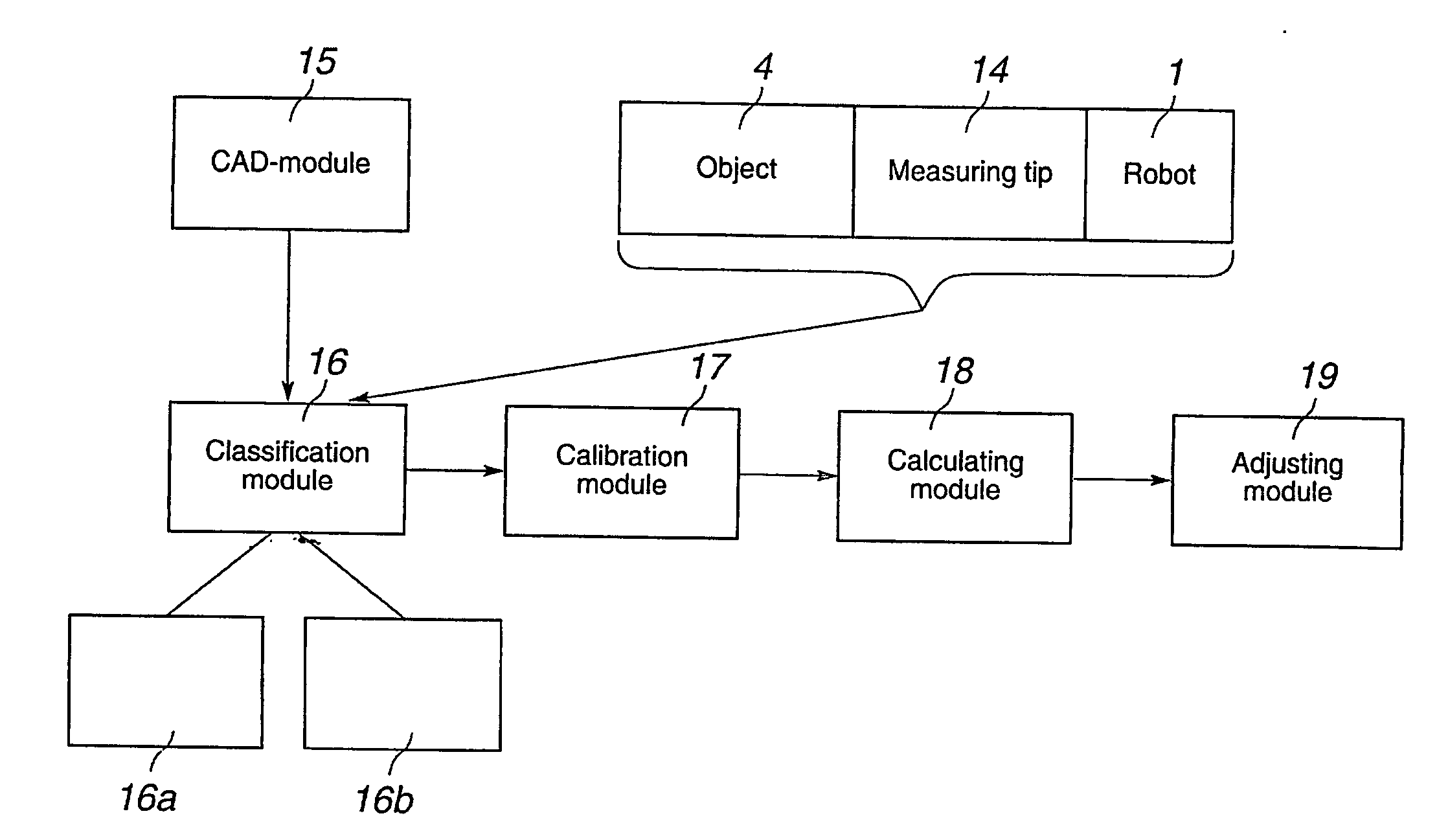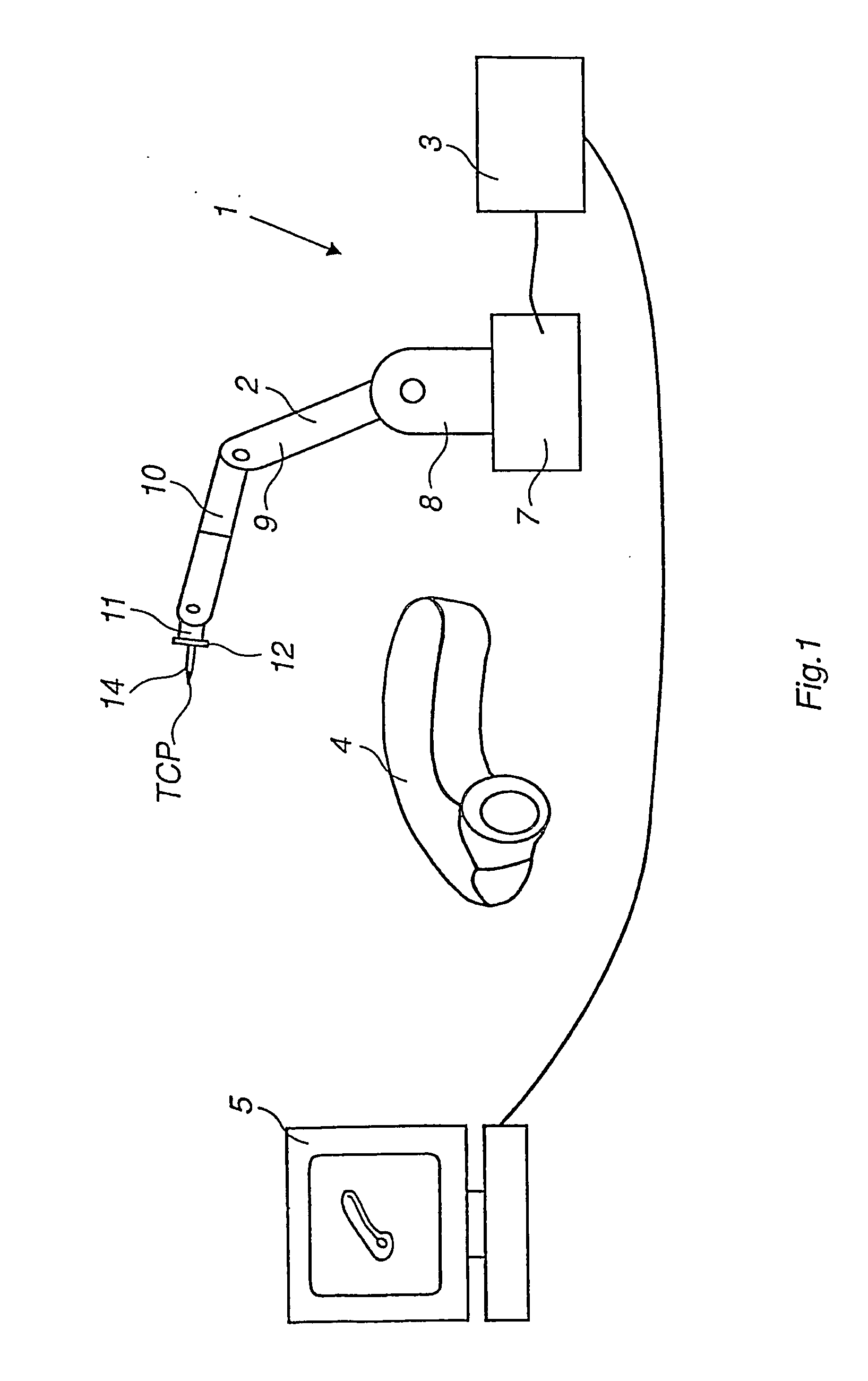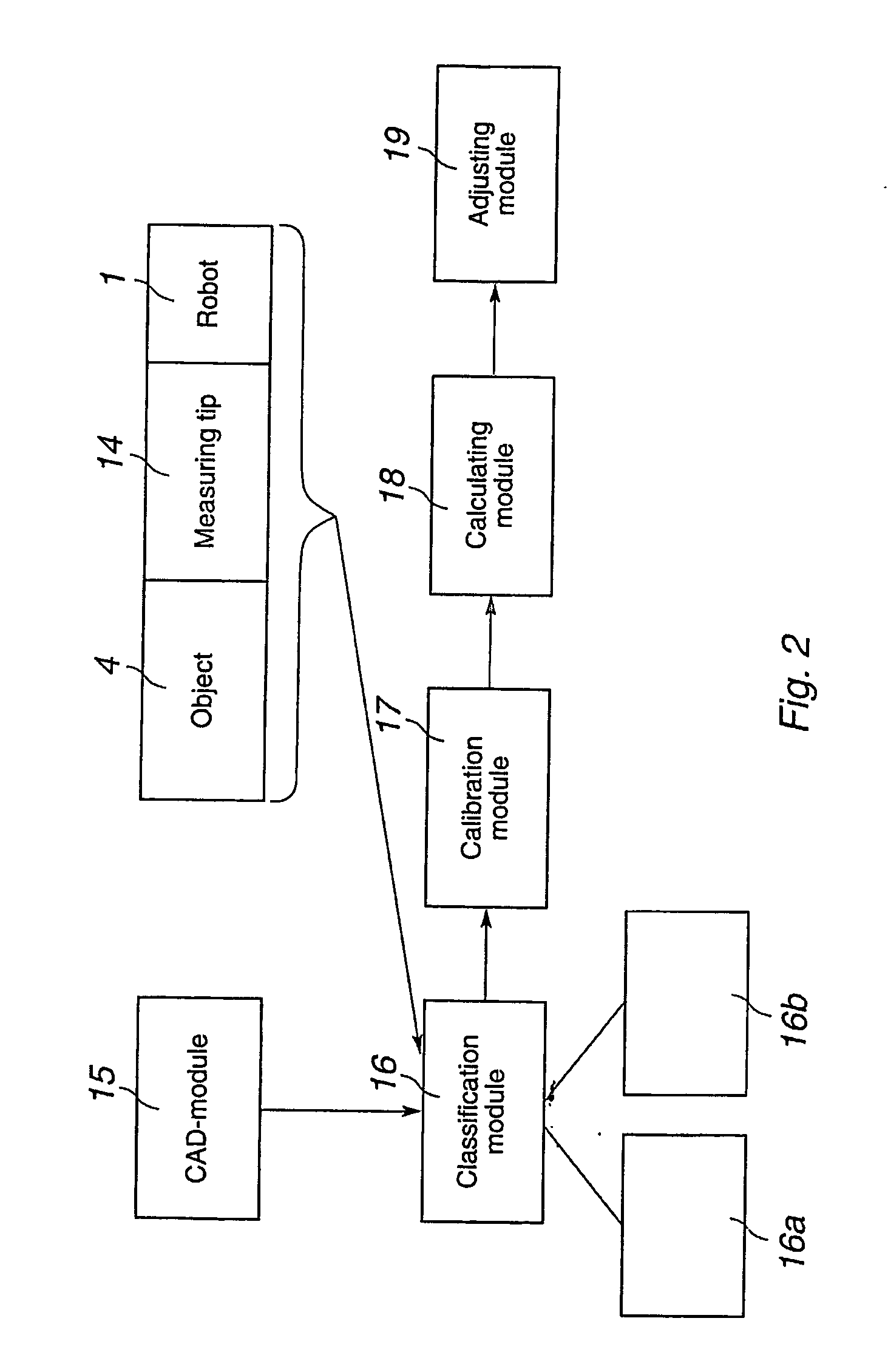Method and a system for programming an industrial robot to move relative to defined positions on an object, including generation of a surface scanning program
a technology of industrial robots and programming systems, applied in the direction of programme control, electric controllers, total factory control, etc., can solve the problems of large robot accuracy, inconvenient operation, and inability to accurately program robots, etc., to achieve the effect of simplifying the calibration and programming of robots
- Summary
- Abstract
- Description
- Claims
- Application Information
AI Technical Summary
Benefits of technology
Problems solved by technology
Method used
Image
Examples
third embodiment
[0107] In one embodiment, the user shows where to place all the measuring points on the object, and the path to be followed by the robot during the measuring, by pointing on the CAD model of the object. Thereafter, a surface scanning program is automatically generated, which surface scanning program controls the movements of the robot during the measuring. In another embodiment, the user only shows the measuring points and the robot motion, necessary for performing the measuring, are automatically generated. In a third embodiment, it is enough if the operator defines which surfaces to be measured, by pointing out those surfaces on the CAD model. Thereafter the CAD system generates a surface scanning program for controlling the movements of the robot during the measuring. Besides which surfaces to be measured, the user also specifies the scanning density of the measuring. The CAD system lays out the positions of the measuring points in a raster, and later determines by means of known...
embodiment 5
[0114] In FIG. 18 the upper figure shows an object surface 120 having manually positioned measuring points, and the lower left figure shows measuring points 117 automatically generated by the surface scanning program. The figure illustrates that the automatically generated measuring points have to be kept within an uncertain zone 122. The zone 122 represents the area in which it is uncertain if the object is there or not. Within this zone no measuring points should be generated. If the sensor in any way should fail to hit the object when the measuring device is moved down towards the surface of the object, the program should include a function, which detects if the sensor has been moved too far, and which then interrupt the measuring of the measuring point. The left figure illustrates that it during measuring with an LVDT sensor also has to be margins during programming of the sensor movement in a direction towards a measuring point 117. The figure shows the uncertainty due to where...
PUM
 Login to View More
Login to View More Abstract
Description
Claims
Application Information
 Login to View More
Login to View More - R&D
- Intellectual Property
- Life Sciences
- Materials
- Tech Scout
- Unparalleled Data Quality
- Higher Quality Content
- 60% Fewer Hallucinations
Browse by: Latest US Patents, China's latest patents, Technical Efficacy Thesaurus, Application Domain, Technology Topic, Popular Technical Reports.
© 2025 PatSnap. All rights reserved.Legal|Privacy policy|Modern Slavery Act Transparency Statement|Sitemap|About US| Contact US: help@patsnap.com



